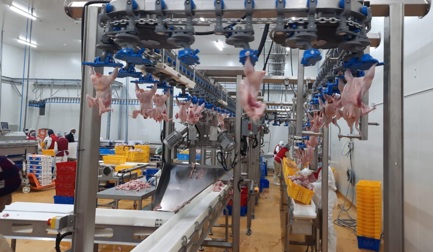America and Asia
Looking further afield, the Americas have no native chicken of their own. In the USA, a lot of broiler meat goes into industrial products such as nuggets. Birds are therefore often grown to heavier weights than elsewhere. These are, however, standard broilers.
South-East Asia and particularly China is, however, a different story. Here, concept chicken are known as yellow birds and native birds. The market for yellow birds in China is similar to that for standard broilers. The problem is that a 2.5 kg yellow bird can vary significantly by region and breed. Whereas you can reasonably predict what a 3 kg broiler will look like in any market across the world, you can’t do the same for Chinese yellow birds. This makes coming up with standardized automatic solutions challenging, to say the least.
Heads, hocks and feet
In South-East Asia, where native birds are sold whole (HOFO, head-on, feet-on), damage to heads and feet must be avoided at all costs. Particular attention has to be paid to the kill cut and heads must be free of feathers. Processors often use off-line drum pluckers to avoid damage to hocks and feet, although the labor intensiveness of this process and the rising cost of this labor are forcing them to move to plucking birds in-line in conventional plucking systems. Suffice it to say, Marel pluckers have a system of synthetic guide rails, which in conjunction with crossbars on the killing shackle hold product firmly during the plucking process. This reduces to an absolute minimum the risk of damage to hocks and feet. Yellow birds and native birds sold with hocks and feet on will need to have these tucked carefully into the abdominal cavity. It is possible to tuck in the feet before chilling, but it is more common to do so after whole bird grading, even if they are less flexible at that stage.
Country, native, local and label chicken represent a growing market. Marel is a global company, present in all markets where chicken are processed industrially. Processing these very diverse and high-value birds to an equally high standard as regular broilers is a challenge Marel is glad to accept.




